Arthritis
If you do not have arthritis yourself, most likely you know someone who does. With 20% of Canadians of all ages, and 23% of adult Americans, having doctor diagnosed arthritis is far more common than most people understand.
 The pain associated with arthritis can be debilitating and is often so bad that those suffering from it find themselves being labeled as disabled.
The pain associated with arthritis can be debilitating and is often so bad that those suffering from it find themselves being labeled as disabled.
Modern medicine does not understand the full process of arthritis and unfortunately there is no actual cure for the disease. Most often, treatment options include managing the symptoms and pain of arthritis rather than treating the root causes of this ailment. Many patients find that the treatment options available are limited and provide little to no relief.
This has left many patients searching for “alternative therapies” that include things like dietary changes and in recent years, medical cannabis.
Is medical cannabis an option for treating the symptoms of arthritis?
It is our goal to provide you with the information that you will need to make an educated decision on whether or not medical cannabis is an option for your individual needs, or the needs of a loved one.
After reading this article, you should have a basic understanding about medical cannabis and arthritis so that you can further discuss your treatment options with your healthcare provider(s).
After reading this article, if you have any questions or comments please leave them in the comment area below and a Kanteeva team member will respond back to you as soon as possible.
What Is Arthritis?
In the United States, 23% of all adults, or more than 54 million people, have arthritis. It is a leading cause of work disability. The annual direct medical costs are at least $140 billion. The most common form of arthritis is osteoarthritis.
The Mayo Clinic defines arthritis as:
the swelling and tenderness of one or more of your joints.
If you or someone you care about suffers from arthritis, then you already know that this definition minimizes the painful truth behind this ailment.
While many people believe that arthritis is a single disease, in reality, it is a way of referring to joint pain or joint disease. According to the Arthritis Foundation:
There are more than 100 different types of arthritis and related conditions.
While there are more than 100 different types of arthritis and related conditions, for the purposes of this article, we are going to focus on the two most frequently diagnosed forms of arthritis: Rheumatoid Arthritis and Osteoarthritis.
What Is Osteoarthritis?
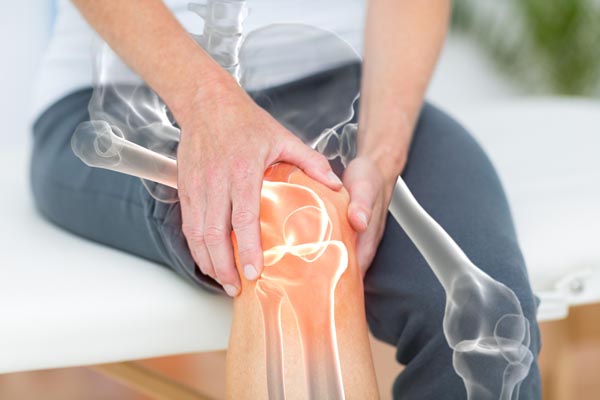
We do not understand very well what's driving this process (of osteoarthritis) but it's more commonly seen in elderly populations and people above (the) age of 40.
Osteoarthritis or OA is the form of arthritis that most people have some experience with.
According to Healthline:
OA is a degenerative disease. This means that damage done to the joints can not be reversed.
Osteoarthritis typically affects elderly populations and people above the age of 40, but can also affect younger people, especially those who are considered overweight or obese. Osteoarthritis is commonly believed to be caused by the overuse of joints due to age or weight, which explains why it is most often seen in older populations.
In most cases, osteoarthritis affects the joints we use the most, like our hands, feet, wrists and knees, but it can affect any joint in your body. The pain experienced from osteoarthritis can often become much worse during a specific period of time that is frequently referred to as a “flare-up.”
During a “flare-up” people suffering from osteoarthritis may experience symptoms like:
- Increased Joint Pain
- Noticeable Swelling at the Area of Pain
- Reduced Joint Range of Motion
- Fatigue Caused by the Increased Amount of Pain
Modern medicine does not know exactly what causes OA flare-ups, but many sufferers of OA have reported that flare-ups seem to occur after events like:
- Increased Stress Levels
- Exercise Related Injuries
- Repetitive Movements over a Long Period
- Cold Temperatures
- Barometric Pressure Drops
- Infections or Illnesses
- Weight Gain that Adds Additional Pressure to Joints
As you can see from the list, some of the causes that are responsible for flare-ups, are within your control, like weight gain, while others, like temperature change and weather patterns, are not. One of the best things that you can do for the success of your overall therapy is to keep a journal of what was going on prior to flare-ups occurring. This can help you and your healthcare provider(s) find treatment options that are best suited to your individual needs.
How Is Osteoarthritis Currently Treated?

OA is currently treated by combining a medication regimen with therapy options like physical and occupational therapy.
Therapy is often designed to strengthen the muscles around joints that are causing frequent pain and other issues. By strengthening the muscles surrounding the joints, less pressure is placed on those joints. This often results in both decreased pain and better use and mobility of affected joints.
As far as medication is concerned, medications frequently begin with NSAIDs (Nonsteroidal Anti-inflammatory Drugs) like acetaminophen (Tylenol) , ibuprofen (Advil) and naproxen sodium (Aleve.) For many people, NSAIDs may not be effective at all or become less effective over time.
Once this occurs, many people find themselves taking a prescription medication like duloxetine (Cymbalta).
For some people suffering from osteoarthritis these options are effective, at least in the beginning. As the symptoms of osteoarthritis worsen, additional treatments may need to be used like Cortisone, lubrication injections, bone realignment, and in some cases joint replacement surgery. Unfortunately, options like joint replacement surgery have their drawbacks, as surgery can cause blood clots and infections, and artificial joints may need to be replaced eventually as they can wear out or become loose over time.
Even with all the options available for the treatment of osteoarthritis, many patients find that the relief they feel from popular medications is not adequate and many start looking for other treatment options like medical cannabis.
Can Medical Cannabis Help Treat Osteoarthritis?
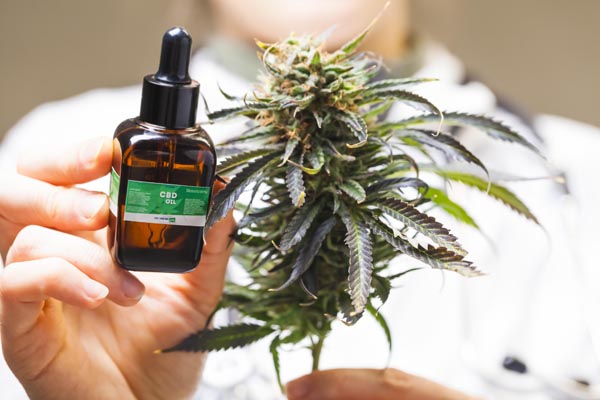
An estimated two thirds of Canadians who use cannabis for medical purposes do so to help manage arthritis symptoms.
- World Arthritis Day 2018, Tilray website
Medical cannabis consumers around the world have stated for a long time that it can greatly help with the chronic pain caused by ailments like osteoarthritis. Many people in the medical cannabis community have said that they have been able to greatly reduce, or stop taking opioid pain relievers all together, after starting to use medical cannabis.
When it comes to the unique type of pain caused by osteoarthritis, many patients say that the application method (consumption method) of medical cannabis makes a massive difference in the effectiveness of their medical cannabis therapy. Many patients claim that the best application method for medical cannabis in the treatment of Osteoarthritis is topically.
Many of these patients report using a cannabis oil infused topical salve, that is applied directly to the joints works the best for them.
Medical cannabis consumers are not alone in their belief that it is best to apply cannabis directly to their joints instead of through a more common method like smoking, vaping or consuming edibles. One study published by the American College of Rheumatology showed that cannabinoids control the pain signals that travel from arthritic joints to the brain.
While many medical cannabis patients report that more common consumption methods, like smoking or vaping, can be effective for helping them manage the pain of Osteoarthritis. Research driven data and patient testimonials claim that a local topical application at the site of the OA pain is the most beneficial or effective for OA pain management.
More clinical research is needed to prove that topical applications of medical cannabis are the most effective treatment for OA pain. That being said, we strongly believe that multiple consumption methods may prove to be the best approach to help treat the symptoms of OA.
What are the Best Marijuana Strains for Osteoarthritis?
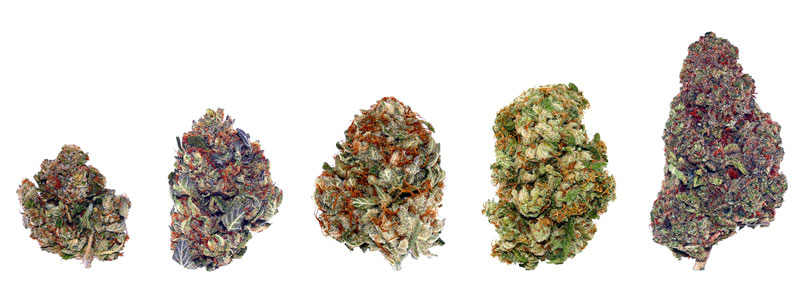
Due to the differences in the nature of osteoarthritis and rheumatoid arthritis, specific cannabis strains may have different results when treating both diseases. It is highly recommended that you speak with your healthcare practitioner(s) before using medical cannabis for the treatment of your osteoarthritis symptoms.
To have the best results possible when using medical cannabis for your osteoarthritis pain, it is important to focus on your individual symptoms. For example, if you have pain but no swelling or inflammation, then you probably want to use a strain high in THC. On the other hand, if you notice significant swelling at the joints where you have pain then a higher CBD option may be your best option since CBD has been shown to help reduce inflammation.
The symptoms of osteoarthritis can be different for every individual so it is important to consult with your healthcare practitioner(s) before starting any kind of medical cannabis regimen. An informed healthcare practitioner(s) can help you discover what strains work for your individual needs.
If you have any additional questions, please feel free to leave them in the comment area below.
What are the Top Strains for Osteoarthritis?
Here at Kanteeva, we conduct our due diligence in order to provide the community with the best information possible. We thoroughly research cannabis strains before we make any recommendations. We base these recommendations on testimonials from medical cannabis community members, anecdotal research, scientific research and other factors like accessibility.
ACDC
Many patients swear by this well known 50/50 Hybrid strain for relieving the symptoms of osteoarthritis. ACDC has a high CBD to THC ratio and normally contains less than 6% THC. If you are new to cannabis this strain can be a great starter strain because of its low THC content. Many patients report no feelings of grogginess or drowsiness after using ACDC; this is important since many people who suffer from osteoarthritis often complain of fatigue during flare ups. ACDC is a great option for daytime use as most patients report having little to no feelings of confusion or fatigue when using this strain during the day.
White Widow
This potent Indica Dominant Hybrid has a solid reputation in both the medical and recreational cannabis community. It has a very low CBD content of around 0.1%, but has potent levels of THC that average around 18%. White Widow is one of the most popular strains among the medical cannabis community for patients suffering from osteoarthritis. Many patients claim that White Widow is an amazing strain for daytime use of pain relief, despite its Indica Dominant genetics. It is also considered to be a great beginner strain despite its high THC content.
Granddaddy Purps
Many people who suffer from osteoarthritis also suffer from Insomnia. The pain associated with OA often makes it difficult for people to fall asleep, and many patients report waking up in the middle of the night with severe pain. Granddaddy Purps is an Indica Dominant Hybrid strain that has very high levels of THC that average 21% or more. Granddaddy Purps is known for being a very potent strain that relaxes your body and helps many patients with both pain and insomnia. Thanks to its reputation of being a longer acting strain, many users report that it is ideal for helping relieve the pain of osteoarthritis throughout the night.
Understanding Rheumatoid Arthritis
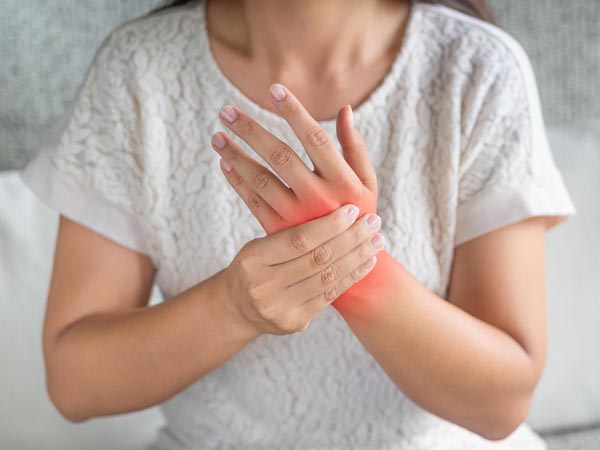
Now that you understand the benefits that medical cannabis can have for the symptoms of osteoarthritis, we can now discuss medical cannabis and rheumatoid arthritis (RA).
What Is Rheumatoid Arthritis?
Rheumatoid arthritis is an autoimmune disorder that causes pain through inflammation.
According to MedicineNet, RA is:
an autoimmune disease that causes chronic inflammation of the joints.
While modern science has developed medicine to help treat the flare ups associated with rheumatoid arthritis, unfortunately the cause of rheumatoid arthritis is still unknown.
Unlike osteoarthritis, rheumatoid arthritis can affect people of all ages but the symptoms of RA are more commonly noticed during middle age.
RA can often have many similar symptoms to osteoarthritis like:
- Joint Pain
- Swollen Joints
- Joint Stiffness that is Normally Worse after Inactivity or during Morning Hours
- Fatigue, Fever and Loss of Appetite Due to Increased Pain
Since rheumatoid arthritis is an inflammatory autoimmune disorder, according to The Mayo Clinic, it can also affect many other areas of the body in about 40% of those who suffer from it. Areas that may be affected include:
- Skin
- Eyes
- Lungs
- Heart
- Kidneys
- Salivary Glands
- Nerve Tissue
- Bone Marrow
- Blood Vessels
In some cases, people suffering from rheumatoid arthritis develop permanent bone erosion and joint deformity, especially when the disease is left untreated.
While research is still being conducted, there is currently no cure for RA. Fortunately, with the proper medical treatment, many of the symptoms associated with this ailment can be effectively managed, allowing for those suffering from rheumatoid arthritis to live similar lives to what they have had prior to diagnosis.
How Is RA Currently Treated?

Perhaps the primary problem with treating the symptoms of rheumatoid arthritis is that it can often be extremely challenging for healthcare providers to diagnose.
This is because the early symptoms of RA are shared with a variety of other ailments.
Unfortunately, there is no one single test that can be conducted to confirm a diagnosis of rheumatoid arthritis.
This fact, coupled with the fact that optimal treatment success is often found with early diagnosis and therapy, means that many patients often find themselves receiving treatment later in the disease process than what is considered the ideal treatment window.
While there is no cure for rheumatoid arthritis, modern medicine has developed methods of treatment that strive to reduce pain and prevent inflammatory flare ups. Most of the current treatment options available for RA focus around keeping flare ups as infrequent as possible and eliminating flare ups as quickly as possible when they do occur.
Currently, RA is primarily treated with a variety of medications that will vary between healthcare providers. Most often, a combination of medications is used, which can include:
NSAIDs – Nonsteroidal anti-inflammatory drugs that include ibuprofen (Advil), acetaminophen (Tylenol) and naproxen sodium (Aleve). NSAIDs are normally given to help control pain and inflammation, but come with side effects like stomach irritation, possible heart problems and kidney damage. These side effects can become more common when NSAIDs are taken for long periods of time.
Steroids - Medications that are classified as corticosteroids, like prednisone, are often prescribed during periods of RA flare ups. They are often given to help relieve acute symptoms and are often ordered to be slowly tapered off to help minimize side effects like bone thinning, weight gain and increased risk of diabetes development.
Disease-Modifying Antirheumatic Drugs - More commonly referred to as DMARDs, these medications are often given with the intention of slowing the progression of RA and helping to save the joints and other tissues from permanent damage. The most common DMARDs include medications like the antimetabolite, methotrexate (Otrexup, Rasuvo, Rheumatrex), leflunomide (Arava), hydroxychloroquine (Plaquenil), and sulfasalazine (Azulfidine). The side effects of these medications vary but may include liver damage, bone marrow suppression, severe lung infections and in rare cases can even cause serious and sometimes fatal side effects.
Some medications such as methotrexate have even been shown to cause birth defects and death in unborn babies and can be absorbed through the skin and lungs. Because of this, it is important that pregnant women and women who may become pregnant not handle or breathe in the dust from these medications.
Biologic Agents – These medications are a newer class of DMARDs that are also often referred to as biologic response modifiers. Some of the medications included in this class of drugs include abatacept (Orencia), adalimumab (Humira), Anakinra (Kineret), baricitinib (Olumiant), certolizumab (Cimizia), etanercept (Enbrel), golimumab (Simponi), infliximab (Remicade), rituximab (Rituxan), sarilumab (Kevzara), tocilizumab (Actemra) and tofacitinib (Xelijanz).
These medications are typically given to help target specific parts of the immune system that are associated with triggering inflammation that can result in joint and tissue damage. They have a variety of side effects associated with them, including increased risk of blood clot development in the lungs and an increased risk of infection. Biologic DMARDs are often considered to be more effective when taken in conjunction with a non-biologic DMARD like methotrexate or leflunomide.
While these medications can be effective for many people suffering from the symptoms of rheumatoid arthritiss, the associated side effects can be very severe. There has been legal action presented against some of the companies who manufacture some of these drugs, like the lawsuit presented against Abbvie Inc. who makes Humira. The lawsuit claims that the manufacturer failed to adequately warn consumers of risks like invasive fungal infections, nerve damage and cancer. This US FDA safety announcement that was released in February 2019, warned the public that high doses of Xeljanz and Xeljanz XR could potentially cause an increased risk of blood clots in the lungs and even death. This is another example of how severe the side effects can be from some RA medications.
Unfortunately, many people suffering from rheumatoid arthritis find that they are unable to even begin therapy because they can not afford these medications. For example, the medication Humira can cost $38,000 USD per year or more.
The combination of potential side effects and the overwhelming expense of some medications has led many people to seek alternative therapies like medical cannabis to help manage their rheumatoid arthritis symptoms.
Can Medical Cannabis Help Treat Rheumatoid Arthritis?
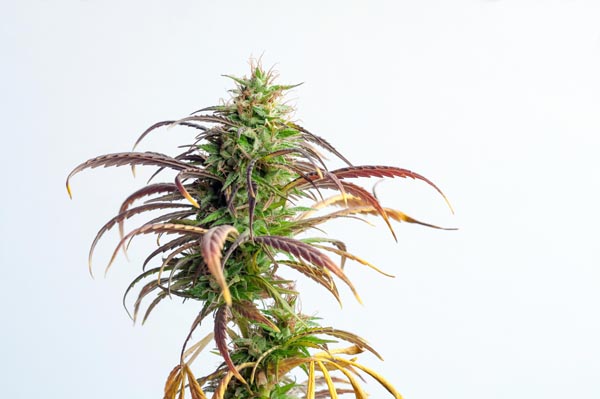
Reported cannabis use among patients with rheumatic diseases has increased significantly, and most patients stated it was helpful for symptom relief.
- Cannabis Use Among Patients in a Large US Rheumatic Disease Registry
More research needs to be conducted before a concrete conclusion can be issued in regards to how effective medical cannabis may be in treating rheumatoid arthritis. While we all wait for more research to be conducted, we can focus on the evidence that is currently available from medical studies, as well as the testimonials from patients who have successfully used medical cannabis to help treat the symptoms of rheumatoid arthritis.
Most of the research being conducted on the use of medical cannabis for treating the symptoms of RA has been focused on the role of the endocannabinoid system in people who suffer from it. If you would like more information on the endocannabinoid system, please check out our article, "The Endocannabinoid System."
Research conducted in 2008 showed the presence of endocannabinoids in the synovial fluids of rheumatoid arthritis patients. These endocannabinoids are not present in the synovial fluids of volunteers who did not suffer from rheumatoid arthritis. This study concluded that the cannabinoid receptor system may be an important therapeutic target for the treatment of pain and inflammation associated with Osteoarthritis and rheumatoid arthritis.
While more research is needed, the findings of this study state that medical cannabis therapy, or the use of cannabinoids in pharmaceutical medications, may be the key to help eliminate pain and inflammation of the joints in those suffering from rheumatoid arthritis.
The findings of the study mentioned above, and other recent studies, have shown that the cannabinoid CBD is an effective anti-inflammatory option and that both CBD and THC are effective for pain relief.
Ultimately, this research illustrates that the use of cannabis and cannabinoids may be a therapy option for many patients suffering from rheumatoid arthritis.
What are the Best Marijuana Strains for Rheumatoid Arthritis?

When you are considering the best cannabis strains for rheumatoid arthritis symptoms, it is important that you consult your healthcare provider(s) before using cannabis. Since many people undergoing treatment for the symptoms of RA are already taking multiple medications, how these medications may interact with cannabis should be evaluated by your healthcare provider(s) before you begin cannabis therapy.
If you decide to use medical cannabis for the treatment of rheumatoid arthritis, then you will want to find strains that have both THC and CBD so that you can take advantage of the pain relieving properties that both of these cannabinoids have to offer. As many medical cannabis patients report, THC will help to deal with breakthrough pain as it provides more immediate pain relief, while CBD has been shown to reduce inflammation and help with pain management over the long term.
What are the Top Strains for Rheumatoid Arthritis?
Here at Kanteeva, we conduct our due diligence in order to provide you with the best information possible. We thoroughly research strains before we make any recommendations. These recommendations are based on testimonials from medical cannabis community members, anecdotal research, scientific research and other factors like accessibility.
ACDC
This 50/50 Hybrid is very popular among the medical cannabis community for its pain-relieving properties. ACDC is known to relieve the symptoms of rheumatoid arthritis thanks to its high CBD to THC ratio. CBD is frequently credited as being the most potent anti-inflammatory cannabinoid, and ACDC’s very high CBD content that averages 20% or more, makes it ideal for the symptoms associated with rheumatoid arthritis. With its very low THC concentration, ACDC is an ideal strain for newcomers to medical cannabis. This very low THC content also makes ACDC a popular strain among medical cannabis patients for daytime use.
Harlequin
This Sativa Dominant Hybrid is a strain that many medical cannabis patients claim has amazing long-acting pain relief benefits. Harlequin has a very high CBD content of 6%-15%, with a low THC content of 4%-10%, and is often recommended for daytime use. Harlequin creates feelings of full body relaxation, so this strain can be ideal for evenings as well. The low THC concentration makes this strain an ideal option for newcomers to medical cannabis.
Girl Scout Cookies (GSC)
This Indica Dominant Hybrid is often reported by medical cannabis patients for being one of the best strains out there for treating body pain, lower back pain and joint pain. Girl Scout Cookies has gained popularity among medical cannabis patients seeking relief from pain because it has very high THC levels that typically average between 18% and 28%. As a result of its very high THC content, it is recommended to consume this strain during evening hours. Many medical cannabis patients use Girl Scout Cookies in the late afternoon or evening.
Final Thoughts
While arthritis can often be associated with many different ailments, the two primary forms of arthritis, osteoarthritis and rheumatoid arthritis, can have devastating effects on a person’s life if not managed properly. Both OA and RA can make the simplest tasks painful and even impossible in some cases.
Thankfully, there have been thousands of people all over the world who have been able to find relief from these chronic ailments by using medical cannabis.
If you are interested in starting a medical cannabis program to treat your arthritis symptoms, we strongly encourage you to speak with your healthcare provider(s) and join our community for more helpful information from other patients and practitioners.
We Want to Hear from You

Have you or a loved one found relief from arthritis by using medical cannabis? If you have, we would love to hear from you!
Please help us spread the word about the amazing benefits that medical cannabis patients are finding all over the world by becoming part of the Kanteeva community.
With your help, thousands of others could finally find relief too.
Please share your stories, comments and questions below. If you are a medical cannabis patient, please also mention what strain has been effective at helping you find relief.
Thank you for taking the time to read this article. We look forward to hearing your story soon!
Learn. Share. Connect.
